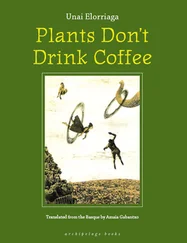Physiology of Salt Stress in Plants
Здесь есть возможность читать онлайн «Physiology of Salt Stress in Plants» — ознакомительный отрывок электронной книги совершенно бесплатно, а после прочтения отрывка купить полную версию. В некоторых случаях можно слушать аудио, скачать через торрент в формате fb2 и присутствует краткое содержание. Жанр: unrecognised, на английском языке. Описание произведения, (предисловие) а так же отзывы посетителей доступны на портале библиотеки ЛибКат.
- Название:Physiology of Salt Stress in Plants
- Автор:
- Жанр:
- Год:неизвестен
- ISBN:нет данных
- Рейтинг книги:4 / 5. Голосов: 1
-
Избранное:Добавить в избранное
- Отзывы:
-
Ваша оценка:
- 80
- 1
- 2
- 3
- 4
- 5
Physiology of Salt Stress in Plants: краткое содержание, описание и аннотация
Предлагаем к чтению аннотацию, описание, краткое содержание или предисловие (зависит от того, что написал сам автор книги «Physiology of Salt Stress in Plants»). Если вы не нашли необходимую информацию о книге — напишите в комментариях, мы постараемся отыскать её.
Discover how soil salinity affects plants and other organisms and the techniques used to remedy the issue Physiology of Salt Stress in Plants,
Physiology of Salt Stress in Plants
Physiology of Salt Stress in Plants
Physiology of Salt Stress in Plants — читать онлайн ознакомительный отрывок
Ниже представлен текст книги, разбитый по страницам. Система сохранения места последней прочитанной страницы, позволяет с удобством читать онлайн бесплатно книгу «Physiology of Salt Stress in Plants», без необходимости каждый раз заново искать на чём Вы остановились. Поставьте закладку, и сможете в любой момент перейти на страницу, на которой закончили чтение.
Интервал:
Закладка:
14 Dillon, P., Kumar, A., Kookana, R. et al. (2009). Managed aquifer recharge ‐ risks to groundwater dependent ecosystems ‐ a review. Water for a Healthy Country Flagship Report to Land and Water Australia.
15 Eliazer‐Nelson, A.R.L., Ravichandran, K., and Antony, U. (2019). The impact of the Green Revolution on indigenous crops of India. J. Ethn. Food. 6: 8.
16 El‐Raey, M., Nasr, S., Frihy, O. et al. (1995). Potential impacts of accelerated sea‐level rise on Alexandria Governorate, Egypt. J. Coast. Res. 11: 190–204.
17 Flowers, T.J. (2004). Improving crop salt tolerance. J. Exp. Bot. 55: 307–319.
18 Garreta‐Lara, E., Campos, B., Barata, C. et al. (2018). Combined effects of salinity, temperature and hypoxia on Daphnia magna metabolism. Sci. Total Environ. 610–611: 602–612.
19 Godoy, G., Steadman, J.R., Dickman, M.B., and Dam, R. (1990). Use of mutants to demonstrate the role of oxalic acid in pathogenicity of Sclerotiniasclerotiorum on Phaseolus vulgaris. Physiol. Mol. Plant Pathol. 37: 179–191.
20 Gorham, J. (1995). Betaines in higher plants: biosynthesis and role in stress metabolism. In: Amino Acids and Their Derivatives in Higher Plants (ed. R.M. Wallsgrove), 171–203. Cambridge, UK: Cambridge University Press.
21 Gul, M., Wakeel, A., Saqib, M., and Wahid, A. (2015). Effect of NaCl‐induced saline sodicity on the interpretation of soil potassium dynamics. Arch. Agron. Soil Sci. 62: 523–532.
22 Gupta, B. and Huang, B. (2014). Mechanism of salinity tolerance in plants: physiological, biochemical, and molecular characterization. Int. J. Genomics 2014: 1–18.
23 Halse, S.A., Shiel, R.J., and Williams, W.D. (1998). Aquatic invertebrates of Lake Gregory, northwestern Australia, in relation to salinity and ionic composition. Hydrobiologia 381: 15–29.
24 Hanin, M., Ebel, C., Ngom, M. et al. (2016). New insights on plant salt tolerance mechanisms and their potential use for breeding. Front. Plant Sci. 7: 1787.
25 Hasanuzzaman, M., Nahar, K., Alam, M.M. et al. (2014). Potential use of halophytes to remediate saline soils. BioMed. Res. Int. 2014: 1–12.
26 Hasegawa, P.M., Bressan, R.A., Zhu, J.K., and Bohnert, H.J. (2000). Plant cellular and molecular responses to high salinity. Annu. Rev. Plant Physiol. Plant Mol. Biol. 51: 463–499.
27 Hossain, M.S. (2019). Present scenario of global salt affected soils, its management and importance of salinity research. Int. Res. J. Biol. Sci. 1: 1–3.
28 Indian Council of Agricultural Research (ICAR) (2015). Vision 2050. New Delhi, India: M/s Royal Offset Printers.
29 Isayenkov, S.V. and Maathuis, F. (2019). Plant salinity stress; many unanswered questions remain. Front. Plant Sci. 10: 80.
30 Kaur, B., Gupta, S.R., and Singh, G. (2000). Soil carbon, microbial activity and nitrogen availability in agroforestry systems on moderately alkaline soils in northern India. Appl. Soil Ecol. 15: 283–294.
31 Kultz, D. (2015). Physiological mechanisms used by fish to cope with salinity stress. J. Exp. Biol. 218: 1907–1914.
32 Lauchli, A. and Grattan, S.R. (1970). Plant growth and development under salinity stress. In: Advances in Molecular Breeding Toward Drought and Salt Tolerant Crops (eds. M.A. Jenks, P.M. Hasegawa and S.M. Jain), 1–32. Dordrecht: Springer.
33 Lodeyro, A.F. and Carrillo, N. (2015). Salt stress in higher plants: mechanisms of toxicity and defensive responses. In: Stress Responses in Plants (eds. B. Tripathi and M. Müller), 1–33. Basel, Switzerland: Springer, Cham.
34 Maas, E.V. (1993). Plant growth response to salt stress. Tasks Veg. Sci. 1: 279–291.
35 Mandal, A.K., Singh, R., Joshi, P.K., and Sharma, D.K. (2018). Mapping and characterization of salt affected soils for reclamation and management: a case study from the trans‐gangetic plain of India. In: Sustainable Management of Land Resources an Indian Perspective (eds. G.P. Obi Reddy, N.P. Patil and A. Chaturvedi), 191–201. Oxfordshire, UK: Taylor and Francis.
36 Mane, A.V., Karadge, B.A., and Samant, J.S. (2011). Salt stress induced alteration in growth characteristics of a grass Pennisetumalopecuroides. J. Environ. Biol. 32: 753–758.
37 Munns, R. (2002). Comparative physiology of salt and water stress. Plant Cell Environ. 25: 239–250.
38 Munns, R. and James, R.A. (2003). Screening methods for salinity tolerance: a case study with tetraploid wheat. Plant Soil 253: 201–218.
39 Munns, R. and Tester, M. (2008). Mechanisms of salinity tolerance. Annu. Rev. Plant Biol. 59: 651–681.
40 Munns, R., Schachtman, D., and Condon, A. (1995). The significance of a two‐phase growth response to salinity in wheat and barley. Aust. J. Plant Physiol. 22: 561.
41 Naidoo, S. and Olaniran, A.O. (2013). Treated wastewater effluent as a source of microbial pollution of surface water resources. Int. J. Environ. Res. Public Health 11: 249–270.
42 Nosetto, M., Jobbágy, E., Tóth, T., and Di‐Bella, C. (2007). The effects of tree establishment on water and salt dynamics in naturally salt‐affected grasslands. Oecologia 152: 695–705.
43 Parida, A.K. and Das, A.B. (2005). Salt tolerance and salinity effects on plants: a review. Ecotoxicol. Environ. Saf. 60: 324–349.
44 Patel, R. (2013). The long green revolution. J. Peasant Stud. 40: 1–63.
45 Pingali, P.L. (2012). Green revolution: impacts, limits, and the path ahead. Proc. Natl. Acad. Sci. 109: 12302–12308.
46 Rasool, S., Hameed, A., Azooz, M.M. et al. (2013). Salt stress: causes, types and responses of plants. In: Ecophysiology and Responses of Plants Under Salt Stress (eds. P. Ahmad, M.M. Azooz and M. Prasad), 1–24. New York: Springer.
47 Savci, S. (2012). An agricultural pollutant: chemical fertilizer. Int. J. Environ. Sci. Dev. 3: 77–80.
48 Shahid, S.A. and Rahman, K.U. (2011). Soil salinity development, classification, assessment, and management in irrigated agriculture. In: Handbook of Plant and Crop Stress (ed. M. Pessarakli), 24–36. Oxfordshire: Taylor and Francis.
49 Shahid, S.A., Zaman, M., and Heng, L. (2018). Soil salinity: historical perspectives and a world overview of the problem. In: Guideline for Salinity Assessment, Mitigation and Adaptation Using Nuclear and Related Techniques (eds. S.A. Shahid, M. Zaman and L. Heng), 43–53. Basel, Switzerland: Springer, Cham.
50 Sharma, D.K. and Singh, A. (2015). Salinity research in India‐ achievements, challenges and future prospects. Water Energy Int. 58: 35–45.
51 Shrivastava, P. and Kumar, R. (2015). Soil salinity: a serious environmental issue and plant growth promoting bacteria as one of the tools for its alleviation. Saudi J. Biol. Sci. 22: 123–131.
52 Singer, M.A. and Lindquist, S. (1998). Multiple effects of trehalose on protein folding in vitro and in vivo. Mol. Cell 1: 639–648.
53 Singh, A., Krause, P., Panda, S.N., and Flugel, W.A. (2010). Rising water table: a threat to sustainable agriculture in an irrigated semi‐arid region of Haryana, India. Agric. Water Manag. 97: 1443–1451.
54 Sultana, N., Ikeda, T., and Kashem, M.A. (2001). Effect of foliar spray of nutrient solutions on photosynthesis, dry matter accumulation and yield in seawater‐stressed rice. Environ. Exp. Bot. 46: 129–140.
55 Thomas, J.C. and Bohnert, H.J. (1993). Salt stress perception and plant growth regulators in the halophyte Mesembryanthemumcrystallinum. Plant Physiol. 103: 1299–1204.
56 Velasco, J., Gutiérrez‐Cánovas, C., Botella‐Cruz, M. et al. (2019). Effects of salinity changes on aquatic organisms in a multiple stressor context. Philos. Trans. R. Soc. B: Biol. Sci. 374: 20180011.
57 Williams, W.D. (1998). Salinity as a determinant of the structure of biological communities in salt lakes. Hydrobiologia 381: 191–201.
58 Williams, W.D. (2002). Environmental threats to salt lakes and the likely status of inland saline ecosystems in 2025. Environ. Conserv. 29: 154–167.
Читать дальшеИнтервал:
Закладка:
Похожие книги на «Physiology of Salt Stress in Plants»
Представляем Вашему вниманию похожие книги на «Physiology of Salt Stress in Plants» списком для выбора. Мы отобрали схожую по названию и смыслу литературу в надежде предоставить читателям больше вариантов отыскать новые, интересные, ещё непрочитанные произведения.
Обсуждение, отзывы о книге «Physiology of Salt Stress in Plants» и просто собственные мнения читателей. Оставьте ваши комментарии, напишите, что Вы думаете о произведении, его смысле или главных героях. Укажите что конкретно понравилось, а что нет, и почему Вы так считаете.












